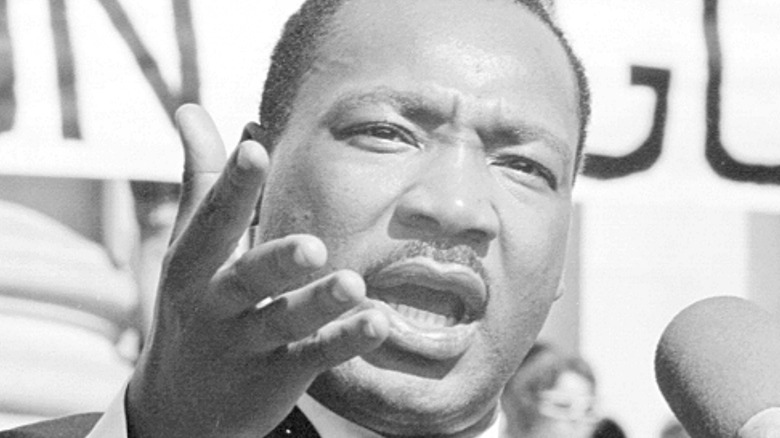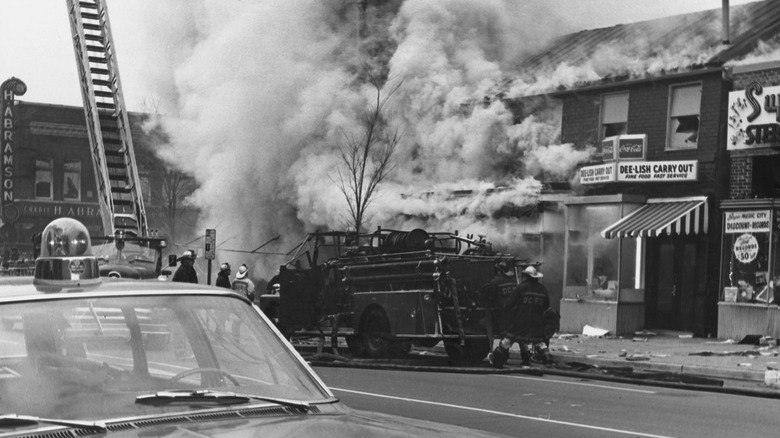What Really Happened After Martin Luther King Jr. Died?
Before the term "social justice warrior" was even a concept, one Baptist minister with a penchant for peace and equality was already enlisted in a war of the minds with the goal of peace. Known all across the world as Martin Luther King Jr., that lone man would wage a silent protest against racism (via Britannica). The after-effects of this would change a great deal of Western ideology, turning segregation on its ear and altering the ways in which Americans would come to influence the law through demonstration.
In 1964, the civil rights leader became the recipient of the Nobel Peace Prize (via Stanford University). He was deemed "the first person in the Western world to have shown us that a struggle can be waged without violence." That accolade was as much a testament to the blood on the hands of the Western legacy as it was to the preacher's beloved temperament. Over the course of several decades, King's life became emblematic of both peace and unity. Yet, the weeks following Martin Luther King Jr.'s death were not peaceful.
After Martin Luther King Jr. was killed, the King assassination riots ensued
Today, civil rights activist Martin Luther King Jr. is revered for his nonviolent approach to racism, and people all across the globe associate his legacy with peace (via History). But while his approach to public policy may have been peaceful, the weeks following his death were wrought with civil unrest (via Black Past). It is said that during that time, over the course of approximately 10 days, there were more than 100 incidents of nationwide rioting. At least 200 American cities suffered collateral damage as sadness quickly gave way to frustration. In the wake of civil upheaval, dozens were killed, thousands were arrested, and millions of dollars in damages were incurred as cities all across the nation stood ablaze (via Smithsonian Magazine).
These incidents came to be known as the King Assassination riots, or alternatively, the Holy Week uprising. They showed the pain of a nation torn, the cry of a crowd that had lost its leader.

